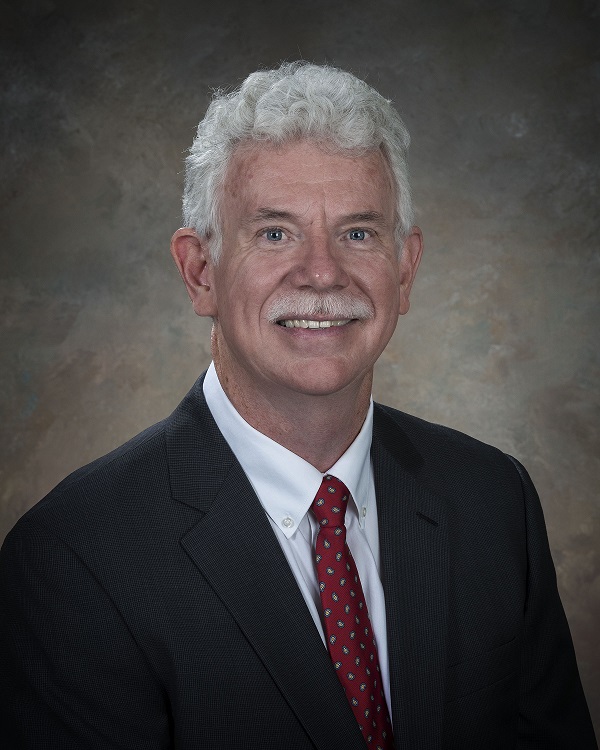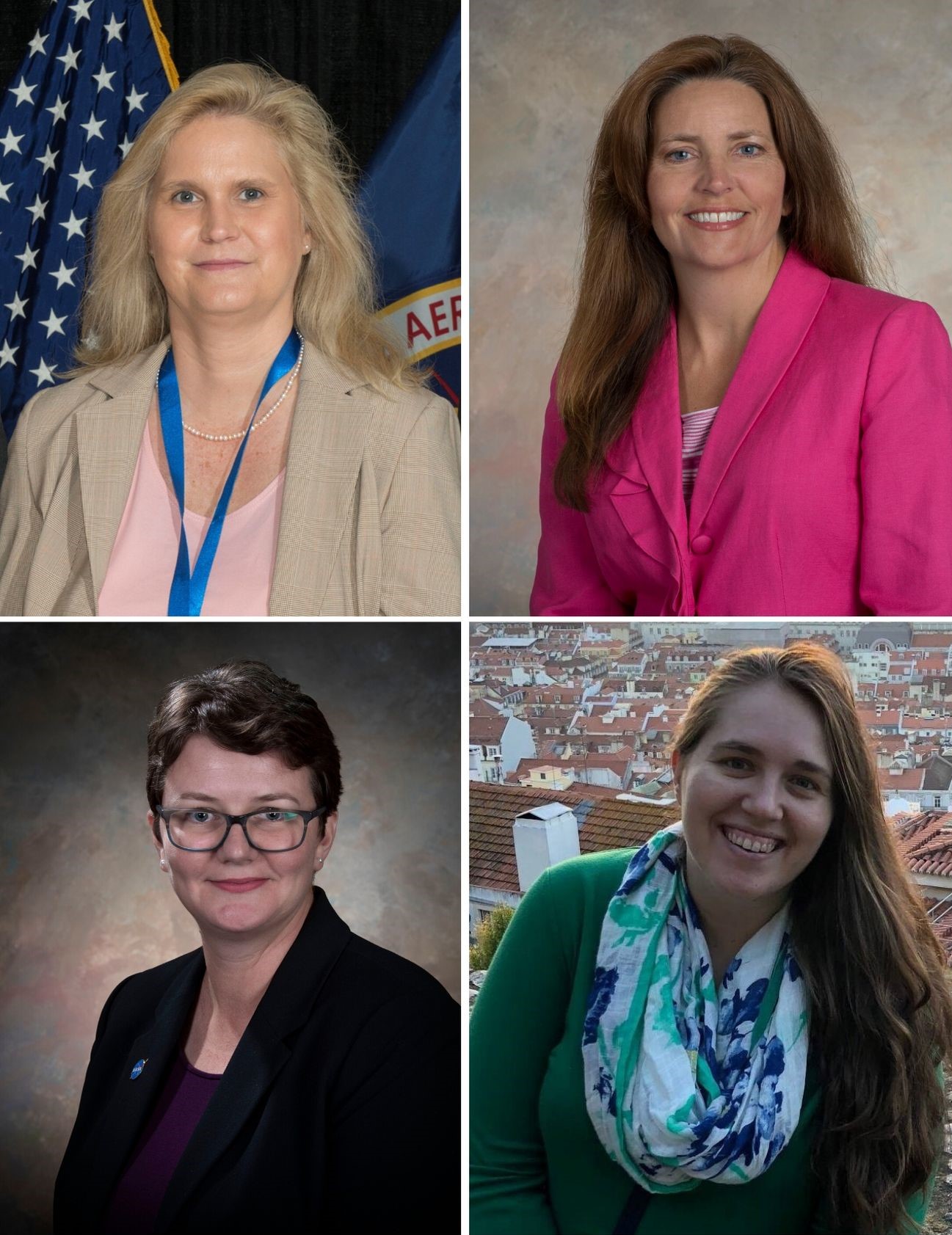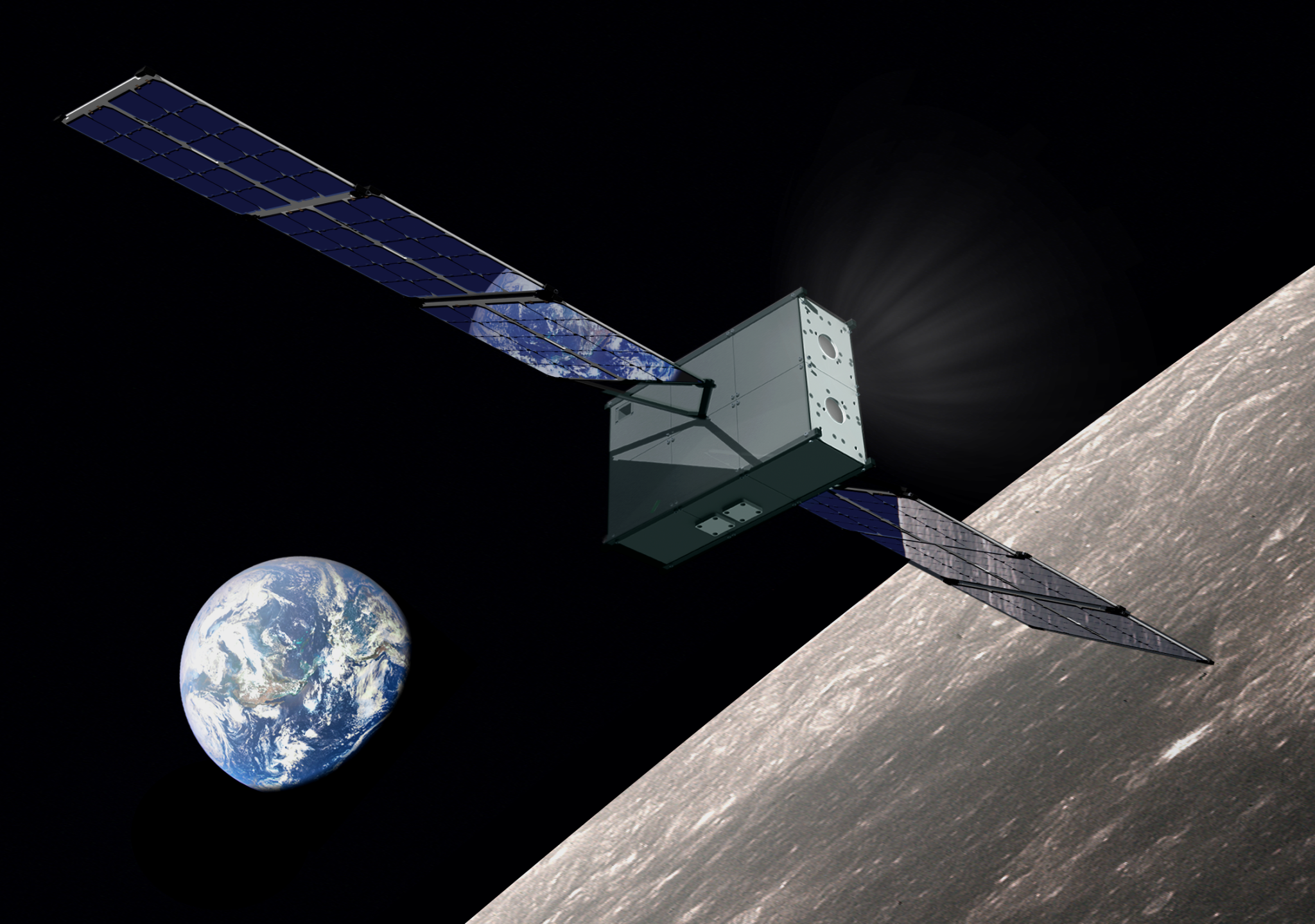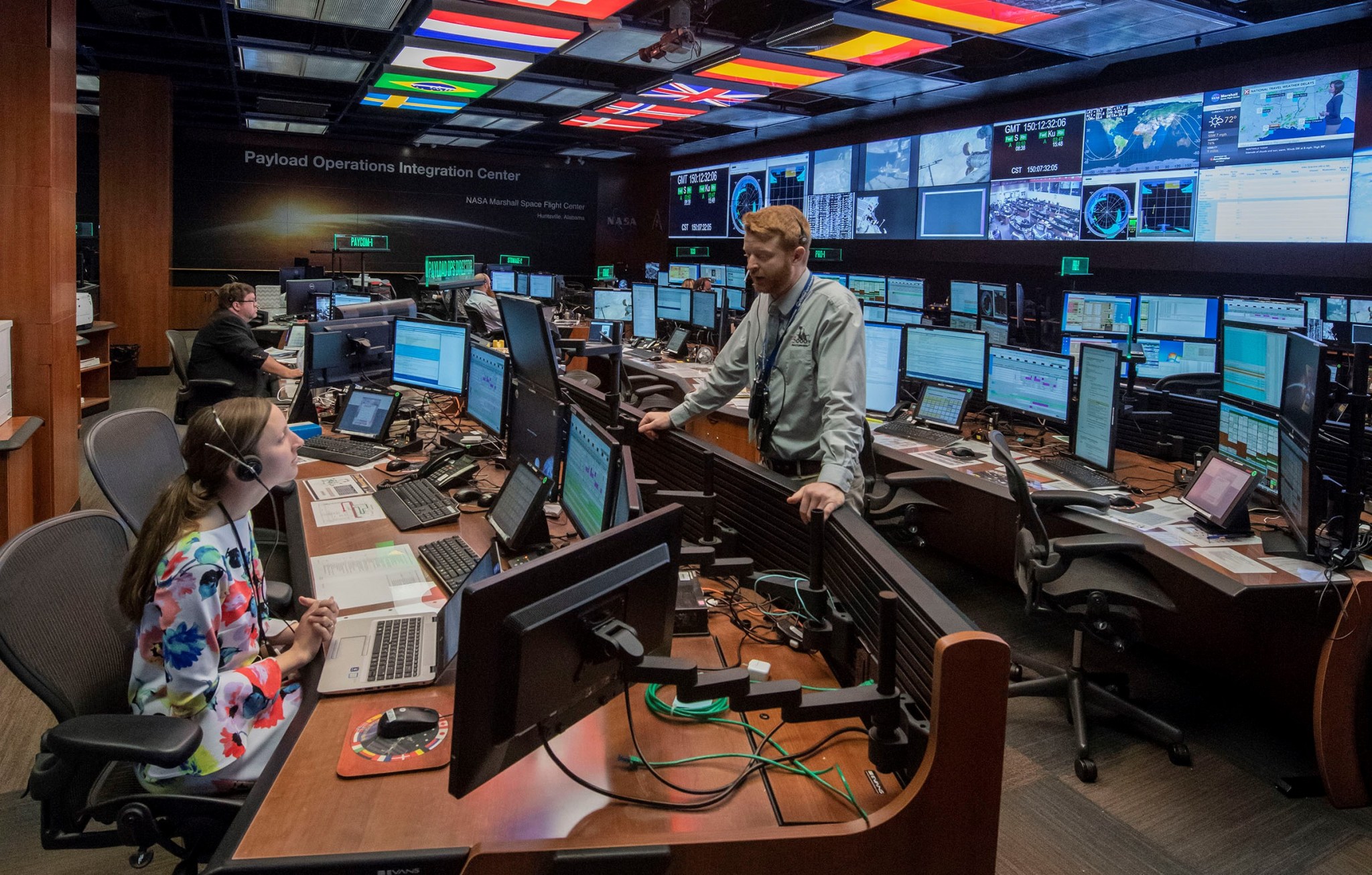In This Week’s Star
- An Astronaut’s Tips for Living in Space — or Anywhere
- Wellbeing in Challenging Times: A Message From Marshall Employee Assistance Program Coordinator Terry Sterry
- Women Leaders Play Vital Role at Marshall, NASA
- Utah State University, Marshall Among Partnerships Selected by NASA to Develop Small Spacecraft Technologies
- Science Takes Time — Even in a Laboratory Moving 17,500 MPH
- Remembering Apollo Astronaut Al Worden
- This Week in NASA History: First Saturn I Stage Test Firing – March 28, 1960
An Astronaut’s Tips for Living in Space — or Anywhere
Editor’s Note: The International Space Station payload operations team in the Payload Operations Integration Center at NASA’s Marshall Space Flight Center continues to operate around the clock through the COVID-19 crisis, supporting astronauts in orbit and monitoring experiments critical to future science breakthroughs. Learn more about the payload operations team here.
This story was adapted from a Twitter thread by Anne McClain, who served as flight engineer on the space station for Expedition 58 and 59.
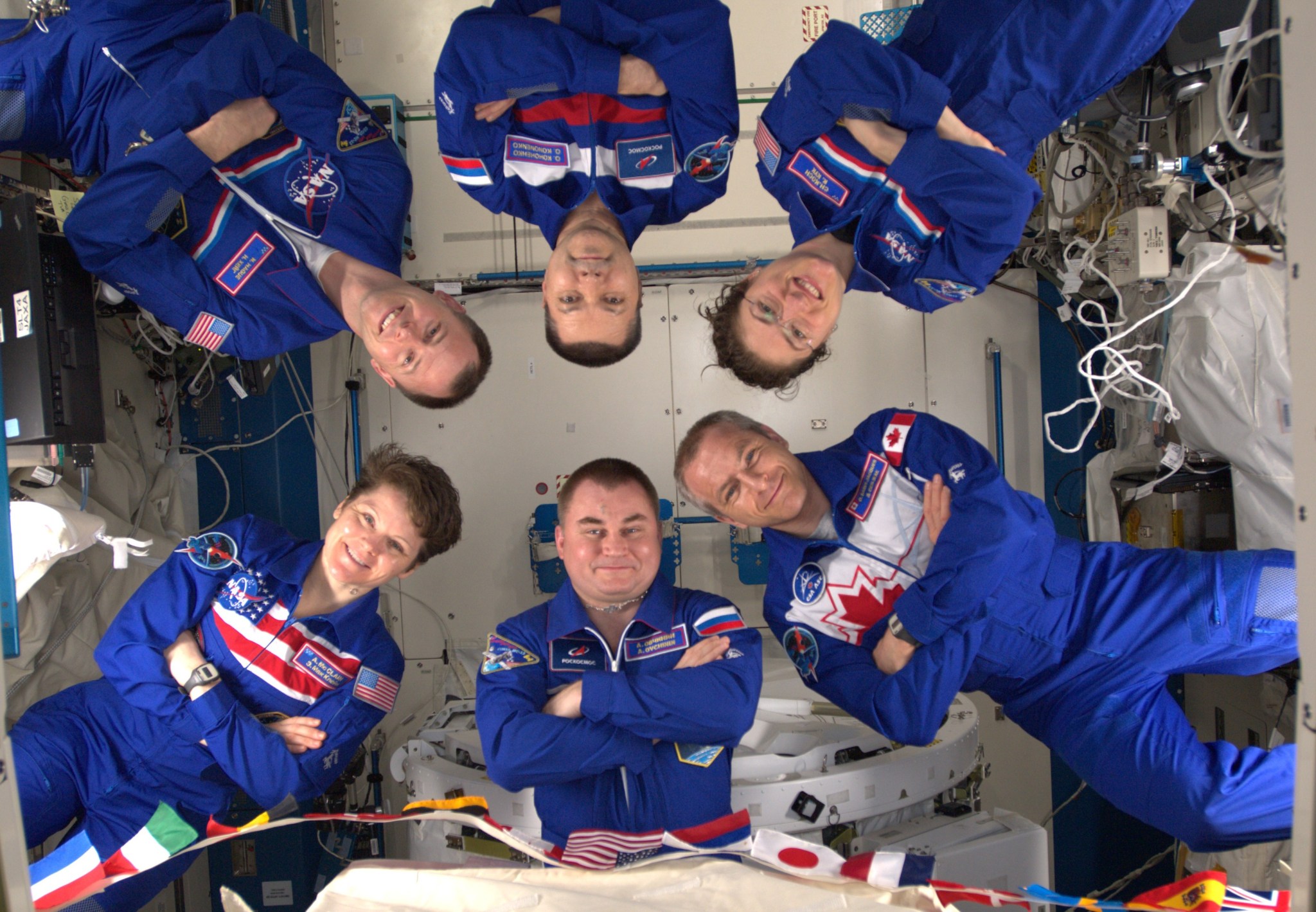
One thing astronauts have to be good at is living in confined spaces for long periods of time. Here are some tips for all those back home on Earth who currently find themselves in a similar scenario.
Nearly 20 years successfully living on the International Space Station and more than 50 flying in space did not happen by accident. NASA astronauts and psychologists have examined which human behaviors create a healthy culture for living and working remotely in small groups. They narrowed it to five general skills and defined the associated behaviors for each skill. NASA astronauts collectively call these skills “Expeditionary Behavior,” and it is part of everything we do. When it goes well, it’s called “good EB.”
Here are the five good expeditionary behavior skills.
Skill 1, Communication
Definition: To talk so you are clearly understood. To listen, and question to understand. Actively listen, pick up on nonverbal cues. Identify, discuss, then work to resolve conflict.
Share information and feelings freely. Talk about your intentions before taking action. Use proper terminology. Discuss when your or others’ actions were not as expected. Take time to debrief after success or conflict. Listen, then restate messages to ensure they are understood. Admit when you are wrong.
Skill 2, Leadership/Followership
Definition: How well a team adapts to changed situations. A leader enhances the group’s ability to execute its purpose through positive influence. A follower, or subordinate leader, actively contributes to the leader’s direction. Establish an environment of trust.
Accept responsibility. Adjust your style to your environment. Assign tasks and set goals. Lead by example. Give direction, information, feedback, coaching and encouragement. Ensure your teammates have resources. Talk when something isn’t right. Ask questions. Offer solutions, not just problems.
Skill 3, Self-Care
Definition: Keeping track of how healthy you are on psychological and physical levels. It includes hygiene, managing your time and your stuff, getting sleep and maintaining your mood. Through self-care, you demonstrate your ability to be proactive to stay healthy.
Realistically assess your own strengths and weaknesses and their influence on the group. Learn from mistakes. Identify personal tendencies and their influence on your success or failure. Be open about weaknesses and feelings. Take action to mitigate stress or negativity; don’t pass them on to the group. Be social. Seek feedback. Balance work, rest and personal time. Be organized.
Skill 4, Team Care
Definition: How healthy the group is on psychological, physical and logistical levels. Recognize the influence of stress, fatigue, sickness, supplies, resources and workload. Nurture optimal team performance despite challenges.
Demonstrate patience and respect. Encourage others. Monitor your team for signs of stress or fatigue. Encourage participation in team activities. Develop positive relationships. Volunteer for the unpleasant tasks. Offer and accept help. Share credit; take the blame.
Skill 5, Group Living
Definition: How people cooperate and become a team to achieve a goal. Identify and manage different opinions, cultures, perceptions, skills and personalities. Demonstrate resilience in the face of difficulty.
Cooperate rather than compete. Actively cultivate group culture, using each individual’s culture to build the whole. Respect roles, responsibilities and workload. Take accountability. Give praise freely. Work to ensure a positive team attitude. Keep calm in conflict.
You can be successful in confinement if you are intentional about your actions and deliberate about caring for your team. When we work together, we will continue to be #EarthStrong.
Wellbeing in Challenging Times: A Message From Marshall Employee Assistance Program Coordinator Terry Sterry
Dear Marshall family,
As we continue through these challenging times, I want to encourage you to keep taking good care of yourselves. Our general wellbeing is built upon a foundation of taking care of ourselves physically, emotionally, spiritually and socially. In times like this, it becomes even more important to be deliberate in paying attention to how we’re really doing in these areas.
Many of us are looking for ways to help others. The members of our Marshall family, and the people of the North Alabama region, have repeatedly proven that in times of need, we have a heart for service to others. Differences and competitions are set aside for the greater good. This is wonderful thing and something that we can all be proud of. Sometimes, though, we get so focused on helping others that we don’t take the time to take care of ourselves. That leads to us not being able to help others. So keep helping others, and also allow others to help you. We all need a little help sometimes.
One of the most important things that we can do in times like this is stay connected with others. Thanks to technology, we can stay connected even when we can’t be face to face, such as when family, friends or co-workers are quarantined. Reach out with a phone call, or whatever method you prefer, and brighten someone’s day. It might help you as much as it helps them.
Use the strategies that work for you in managing your stress and anxiety. In addition to helping others and staying connected, be sure to get a good amount of sleep each night, and some physical activity each day. Take frequent, short breaks from your work so that you aren’t sitting at your computer for hours. Try to limit unhealthy snacks — this is so much harder to do when I’m at home! — and maintain a reasonably healthy diet. Be deliberate about spending time enjoying your hobbies and other activities that help you to relax and/or simply have fun. Limit your exposure to coverage of the coronavirus, politics and other topics that tend to add more stress to your day.
For those of our community who struggle with mental health issues, addictions or who are in recovery, it’s very important to maintain your support systems. Many organizations are now offering online support groups. So if your local group is canceled, find one online. Many counselors are offering telephone or video sessions, as well.
Keep taking good care of yourselves and helping those around you. Remember that Marshall’s Employee Assistance Program is available by telephone at 256-698-9589, or you can email me at terry.w.sterry@nasa.gov to arrange a time to talk.
Be well,
Terry Sterry
Licensed psychologist and Marshall Employee Assistance Program coordinator
For more information on Marshall’s Employee Assistance Program, visit the Partners for Wellness page on ExplorNet. For more information on NASA’s coronavirus response and teleworking, visit NASAPeople.
Women Leaders Play Vital Role at Marshall, NASA
By Taylor Goodwin
NASA’s Marshall Space Flight Center is filled with woman leaders who confidently and consistently contribute to the agency’s missions. In honor of Women’s History Month, Marshall’s Office of Diversity and Equal Opportunity sought to highlight women that embody this year’s theme: “Unite the Mission, Be the Change.” Marshall’s Lisa Bates, Lisa Watson-Morgan, Renee Weber and Emily Adams shared what being a leader at the center means to them.
Lisa Bates
Role: Bates is the Space Launch System deputy stages manager, which she said is both her most difficult and most rewarding position yet. She is involved in all aspects of the SLS core stage build, and is the current manager for Green Run — a series of tests on the core stage of NASA’s Space Launch System rocket.
Inspiration: Growing up on an Alabama farm, she was inspired as she watched Sally Ride become the first American woman in space, which eventually led to Bates’ pursuit of a career in engineering.
“Celebrating the impact of women in science, technology, engineering and math not only inspires people currently engaged with NASA, but also provides examples for our young future explorers,” Bates said.
Wisdom for the next generation: Bates emphasizes finding your place in the workplace in order to thrive in your career.
“Over my career, I experienced many types of positions, but I have found that working on rockets for NASA is my calling,” she said. “I feel a personal and emotional connection to my work, and that is a big part of who I am. I hope the next generation of women realize that great works are never easy. They will be challenged. But if they follow their passion, they can overcome any obstacle to find their own calling.”
Lisa Watson-Morgan
Role: Watson-Morgan is program manager for NASA’s Human Landing System Program. She oversees the integrated lunar landing systems, including vehicles and systems that will transport astronauts to the Moon’s south pole.
Inspiration: A native of Huntsville, Watson-Morgan said some of the women who have inspired her are her mother, Anne Watson; her daughter, Macie Morgan; and her former division chief, Ann McNair.
Wisdom for the next generation: “For anyone who wants to increase the trajectory of their career, I think it is important to be open-minded,” Watson-Morgan said. “I am open to new career challenges and here to serve the government in whatever function is needed at the time, whether that is cleaning up after an employee event, serving as a leader or being an active team member.”
A self-identified introvert, Watson-Morgan wants others to know that it is important to find your voice and confidently express your views.
“Everyone was hired to think and solve problems, so it’s important to take your recommendations to your supervisors or program managers,” she said. “However, you must get comfortable with leaders not always taking your opinions or feedback. Be flexible and learn to communicate at many levels.”
Renee Weber
Role: Weber is Marshall’s chief scientist. She provides strategic leadership to a multidiscipline technical organization with responsibility for oversight of the formulation, maturation, design, development and operation of research and technology projects. She also represents Marshall science to the external community — including NASA Headquarters, NASA field centers, academia, other government agencies and private industry — for the purpose of growing successful partnerships.
Inspiration: Born in Rochester, New York, and raised in Redding, California, Weber said she was inspired by her former graduate advisor at the University of California, San Diego, Catherine Johnson.
“Women’s History Month is a unique opportunity to draw attention to the impact women have — both now and in the past — on all aspects of our professional world,” Weber said. “Women in science, technology, engineering and math fields have made important contributions throughout history that have been overlooked, or only recognized more recently. Drawing attention to these contributions helps encourage women and girls not only to enter the field, but to continue to excel.”
Wisdom for the next generation: Weber encourages women everywhere to seek out mentors who will advocate for them and their work.
“Teamwork is one of NASA’s core values,” Weber said, “and building a diverse and inclusive team will help you reach your goals together.”
Emily Adams
Role: Adams is the Eastern and Southern Africa science coordination lead at NASA’s SERVIR Science Coordination Office. She is responsible for supporting and coordinating the direct science support, capacity building and service planning activities for that hub location, based at the Regional Centre for Mapping of Resources for Development in Nairobi, Kenya.
Inspiration: Adams was inspired by the late marine biologist, author and conservationist, Rachel Carson.
“I think it’s important now — more than ever — to recognize the contributions of people whose work has been relegated to the shadows, dismissed or otherwise misrepresented,” Adams said.
She encourages women everywhere to consistently push themselves out of their comfort zones in the search for new skills and knowledge.
Wisdom for the next generation: “Unlocking the potential of individuals from everywhere, including women and other disenfranchised people, is critical to designing the best solutions for our ever-changing world,” Adams said. “NASA is on the forefront of innovation and inspiration. Diverse teams are proven to produce the best solutions. If we want to find solutions to the world’s greatest problems, we have to have the best teams and that means engaging with the best people.”
Goodwin, an ASRC Federal/Analytical Services employee, supports the Office of Strategic Analysis & Communications.
Utah State University, Marshall Among Partnerships Selected by NASA to Develop Small Spacecraft Technologies
NASA has chosen nine university partnerships — among them a joint effort by Utah State University in Logan and NASA’s Marshall Space Flight Center — to develop small spacecraft technologies that will help pave the way for human and robotic lunar exploration, and aid NASA’s Artemis Program in returning humans to the Moon by 2024.
Currently, small spacecraft — ranging in size from a shoebox to a refrigerator — mainly operate in low-Earth orbit. Technology advancements made via these collaborative partnerships will more fully realize the potential of SmallSats to extend the capabilities of complex lunar exploration missions as well.
“As we prepare for the next robotic and crewed missions to the Moon, we expect small spacecraft to help forge the path ahead by scouting terrain, prospecting for resources and establishing communications and navigation capabilities,” said Christopher Baker, program executive for the Small Spacecraft Technology program.
NASA selected the university teams for its SmallSat Technology Partnerships initiative to mature new systems and capabilities, focusing on three key requirements for future Moon-bound missions: providing lunar communications and navigation services; propulsion for lunar landings and sample return; and electrical power and thermal management systems tailored to the harsh environment between Earth and the Moon.
Researchers at Marshall and Utah State will jointly pursue a project called “3D Printed Hybrid Propulsion Solutions for SmallSat Lunar Landing and Sample Return.” It builds on previous, successful suborbital testing of a 3D-printed plastic and nitrous-oxide and gaseous oxygen hybrid rocket motor — and could enable future NASA small-satellite missions that require high thrust, such as lunar landing and sample return.
Find the complete list of university teams and partner NASA centers here.
“These partnerships help cultivate the rapid, agile and cost-conscious small spacecraft approaches that are evolving in the university community, as well as increase support to university efforts and foster a new generation of innovators for NASA and the nation,” said Jim Cockrell, chief technologist for the Small Spacecraft Technology program. “Working with universities provides access to the bright minds who will one day lead the journey of exploration.”
In the future, SmallSats could provide exploration missions with communications relays or navigation services at the Moon, similar to how communications satellites and GPS are used around Earth. This capability could play an important role in helping the agency build a sustainable presence on the Moon.
The SmallSat Technology Partnerships initiative has four primary objectives: develop critical SmallSat technologies for NASA; engage university students in real-world SmallSat projects; provide student teams with NASA expertise and facilities; and familiarize NASA engineers with the innovative and rapid development paradigm typical of academia.
Since 2013, the Small Spacecraft Technology program has made five rounds of awards. Projects are awarded in amounts up to $200,000 to each university team for up to two years, in collaboration with a half-time NASA partner. The program is managed for the agency by NASA’s Ames Research Center. Learn more here.
Science Takes Time — Even in a Laboratory Moving 17,500 MPH
The International Space Station, the orbiting science platform spinning around Earth at 17,500 miles per hour, has hosted a variety of scientific studies for nearly 20 years. Much of that research — some aided by science hardware and facilities built and tested at NASA’s Marshall Space Flight Center — continues for months and even years.
A prime example is the ongoing Fluid Shifts investigation, led by researchers at NASA’s Johnson Space Center and its industry and academic partners in Texas, France, Germany and Russia. When astronauts began spending months at a time on station, they experienced a number of physical changes, including changes in their vision. Scientists suspect fluids shifting from the lower to the upper body in microgravity may increase pressure inside the head, changing the shape of the eye and affecting vision in some astronauts. Begun in 2015, the investigation continues to measure the extent of body fluid shifts in numerous station crew members.
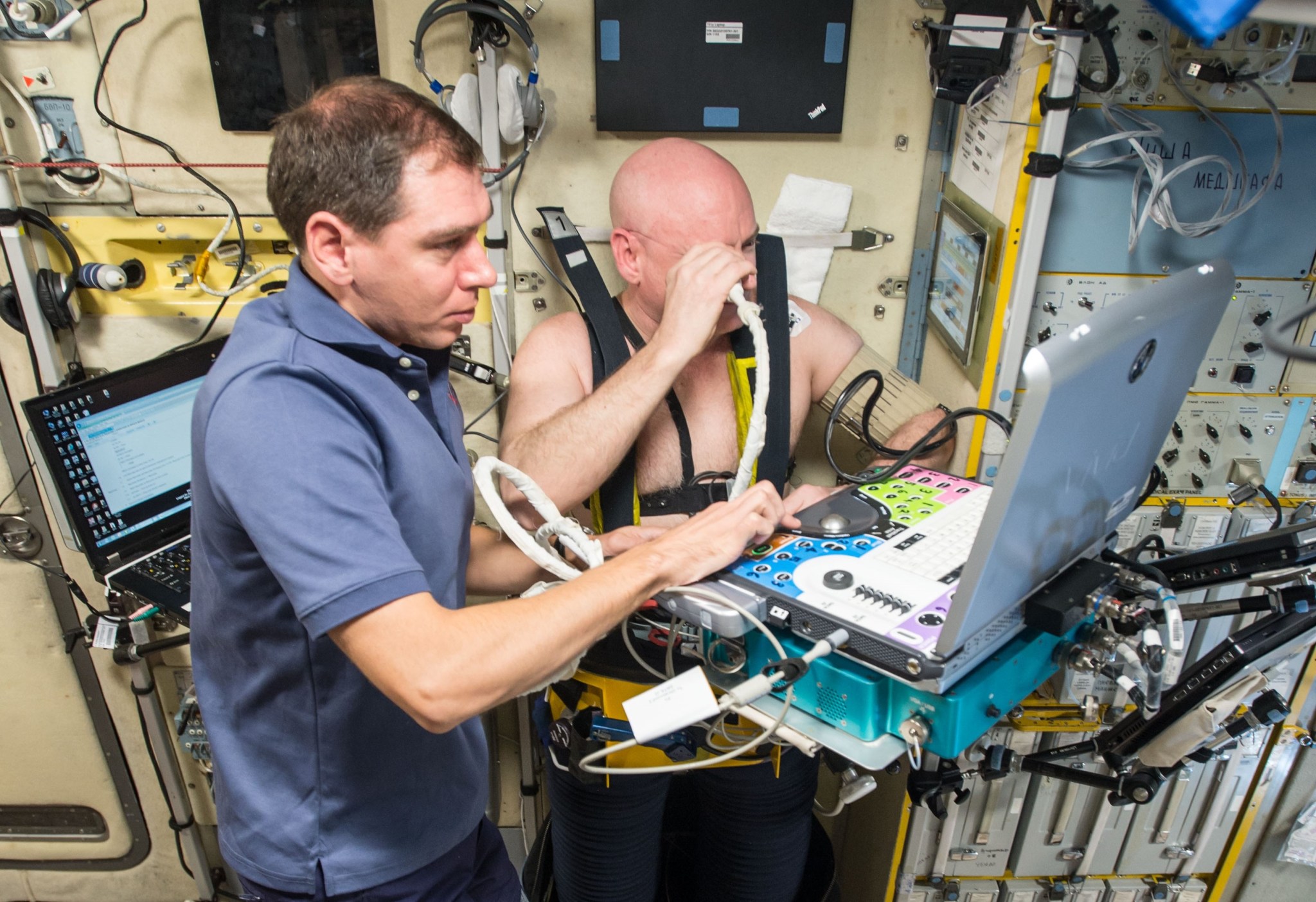
Five years may seem like a long time, but scientific research follows a lengthy step-by-step process. Researchers first must come up with a question and possible answer. For the Fluid Shifts study, the initial question was: What causes vision changes? One hypothetical cause is increased fluid pressure in the head. Scientists designed an experiment to test that hypothesis, determining what data to collect and the resources needed to do so.
For research on the space station, scientists submit a research proposal, which goes through review to evaluate its scientific merit and relevance to NASA’s goals. Once selected investigations are assigned to a mission and that crew is briefed, individual crew members can volunteer to participate in those studies requiring human subjects.
NASA works with investigators to meet their science requirements, schedule crew training, develop flight procedures, launch hardware and supplies to the space station and collect any preflight data needed. Once the crew launches, in-flight data collection begins. During ongoing studies and after project completion, the scientists must analyze all the data and determine whether data are significant.
The Payload Operations Integration Center at Marshall plays a key role here, coordinating all U.S., European, Japanese and Canadian scientific and commercial experiments on the station, synchronizing payload activities of international partners and directing communications between station crewmembers and participating researchers around the world.
“Just because something is different in space doesn’t mean it is scientifically meaningful or a sign of a problem,” said Judy Tate-Brown, space station research results coordinator at NASA Johnson. “You have to look at what the results mean. Is this something we don’t already know or does the change make a difference either to what is happening or how it affects the process or organism? Is this is a helpful response to spaceflight?”
The next step is writing a paper about the results and submitting it to a scientific journal. It may take an investigator a year or more to evaluate data and write the paper. Journal editors may request additional analysis and revisions, and will have the paper reviewed by other scientists in the same field — a months-long process known as peer review.
For space station investigations, the publication process often can take up to a year and a half, Tate-Brown said.
Several unique aspects of research on the space station add still more time to the process. A truism of science is the more test subjects, the better. Although clinical human research usually needs 100 to 1,000 subjects to find a statistically significant result, Tate-Brown said, the space station typically houses just six people at a time. New crew members typically arrive every six months or so.
In nearly 20 years of continuous human presence on the station, only 239 people have visited — and just three of those have been long-duration crew members staying more than six months.
The timeline for science, especially in microgravity, can run long. But results can be well worth the wait.
For more information, visit Space Station Research and Technology news or the ISS National Lab.
The full version of this story by Melissa Gaskill, a science writer supporting the ISS Program Science Office at Johnson, is available here.
Remembering Apollo Astronaut Al Worden
Al Worden, retired astronaut and Apollo 15 command module pilot, died March 17. He was 88.
In April 1966, NASA selected Worden as one of 19 new Apollo astronauts. During his time with the program, Worden served as a member of the astronaut support crew for Apollo 9, a backup module pilot for Apollo 12 and, ultimately, as Endeavor command module pilot for Apollo 15, which launched from NASA’s Kennedy Space Center on July 26, 1971.

“The Marshall family joins with NASA Administrator Jim Bridenstine in sending our deepest condolences to the family and friends of Al Worden,” said Jody Singer, director of NASA’s Marshall Space Flight Center. “Al’s courage and leadership during the Apollo 15 mission in July 1971 will not soon be forgotten. Through their bold initiative and inquisitive nature, the Apollo astronauts blazed a trail for human space exploration and expanded the scope of scientific knowledge.
“I am profoundly grateful for the privilege I had last summer to spend time with Al during our celebration of the 50th anniversary of Apollo 11.” Singer added. “His enthusiasm for space exploration never lessened over the decades as he continued to share his insightful experiences with new generations.”
Worden accomplished three spacewalks during the Apollo 15 mission to retrieve film cassettes from the panoramic and mapping cameras located in Endeavour’s scientific instrument module bay. Another mission highlight was the first use of the Lunar Roving Vehicle – by commander David Scott and lunar module pilot James Irwin — in the extensive exploration of the Moon’s Hadley Rille and Apennene Mountains located on the southeast edge of the Mare Imbrium.
Worden’s connection to Marshall predated his selection to the Apollo astronaut corp. In August 1965, Worden, along with Apollo 14 command module pilot Stuart Roosa and Apollo 16 lunar module pilot Charlie Duke, toured Marshall along with other U.S. Air Force pilot trainees studying at the Air Force’s Aerospace Research Pilot School.
A native of Jackson, Michigan, Worden was a graduate of the U.S. Military Academy at West Point. He also held master’s degrees in both astronautical/aeronautical engineering and instrumentation, as well as an honorary doctorate degree in astronautical engineering — all from the University of Michigan in Ann Arbor.
This Week in NASA History: First Saturn I Stage Test Firing – March 28, 1960
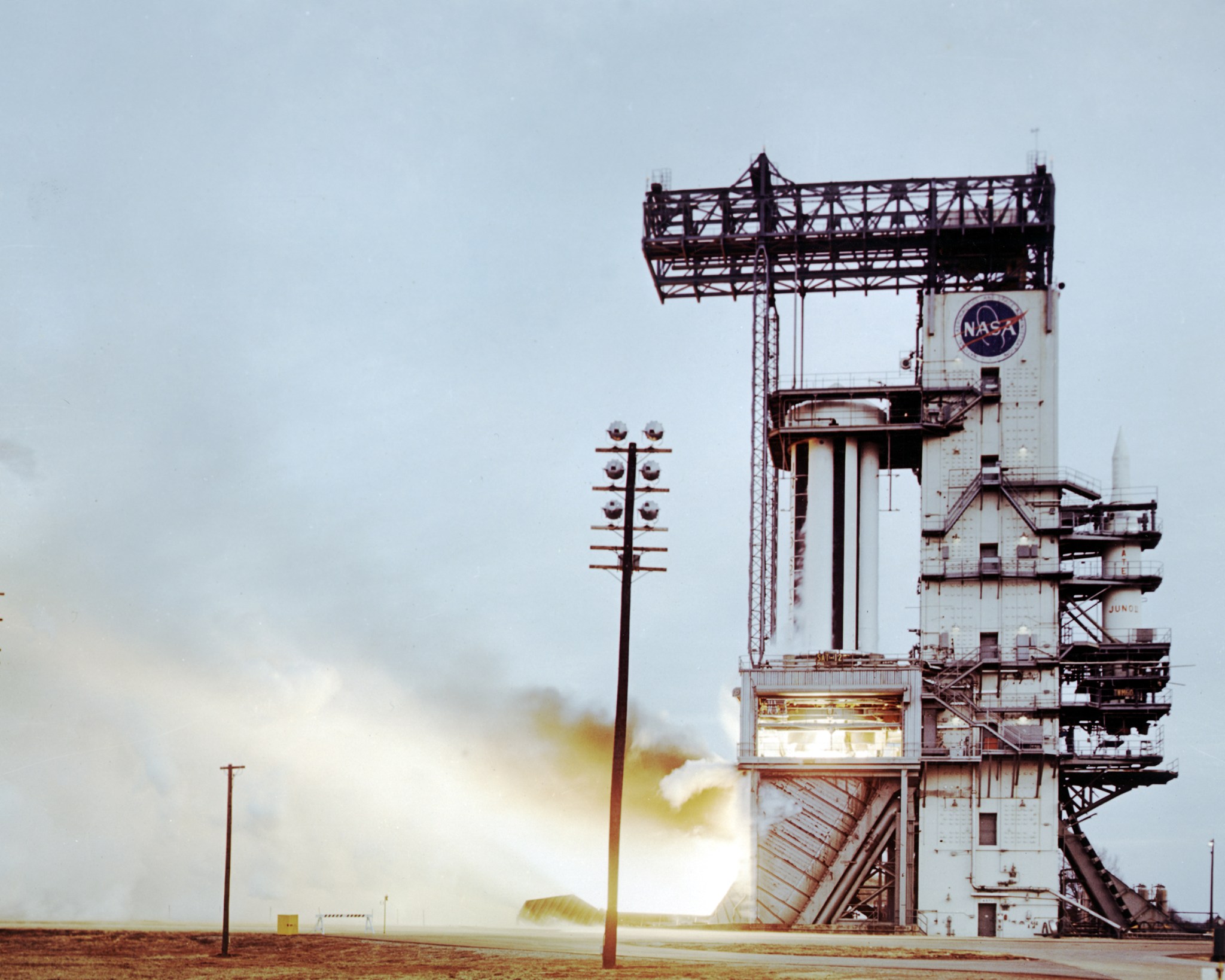
This week in 1960, NASA conducted the first of two tests of the first stage engines of the Saturn I rocket. The first test, SA-T, lasted approximately eight seconds. The Saturn I booster stage was powered by eight H-1 engines, which were capable of producing a combined 1.5 million pounds of thrust. Here, a Saturn I booster stage equipped with eight H-1 engines is successfully test-fired at NASA’s Marshall Space Flight Center in February 1961. Today, Marshall is playing a vital role in the Artemis Program by developing the Space Launch System, the backbone of NASA’s exploration plans and the only rocket capable of sending humans to the Moon and Mars. The NASA History Program is responsible for generating, disseminating and preserving NASA’s remarkable history and providing a comprehensive understanding of the institutional, cultural, social, political, economic, technological and scientific aspects of NASA’s activities in aeronautics and space. For more pictures like this one and to connect to NASA’s history, visit the Marshall History Program’s webpage. (NASA)
























